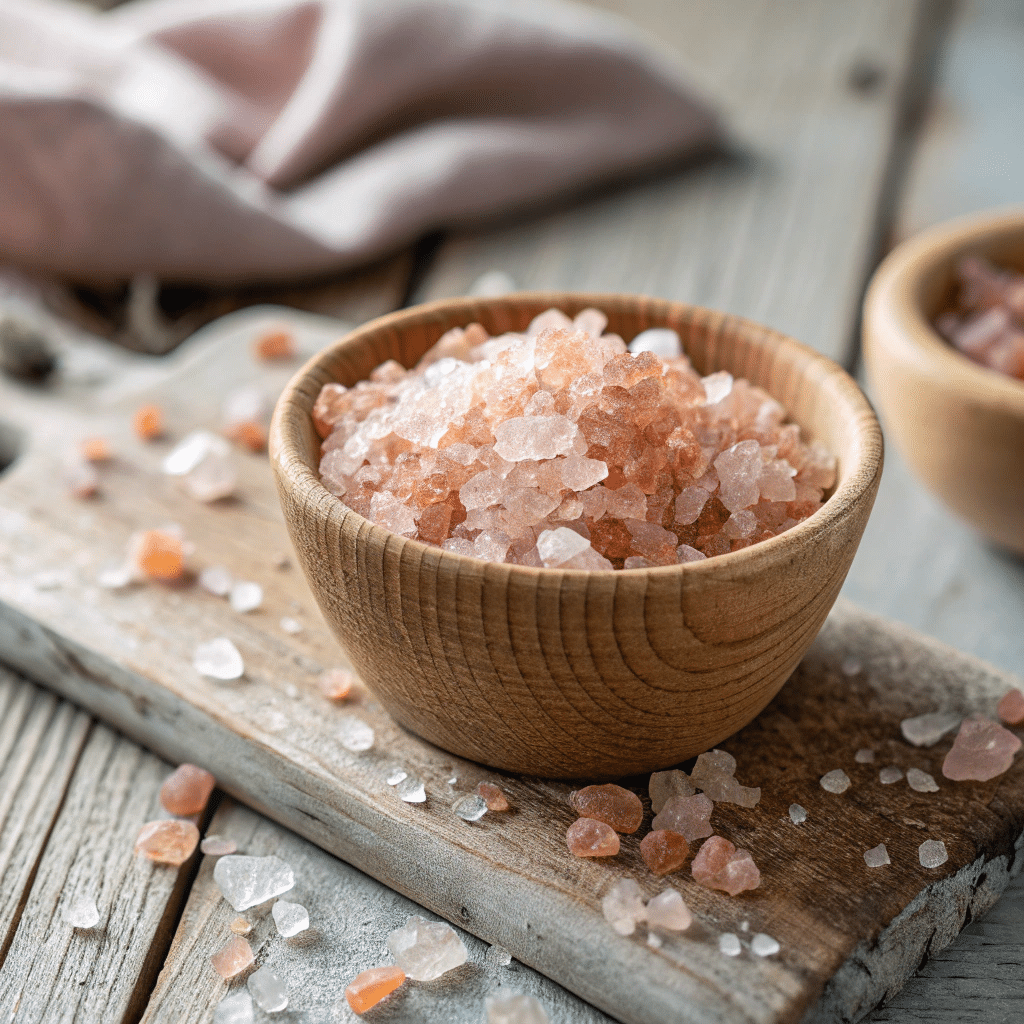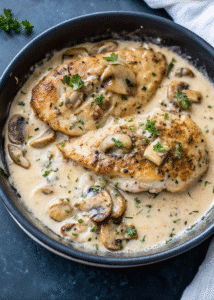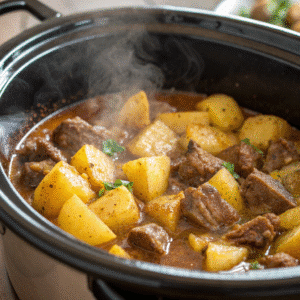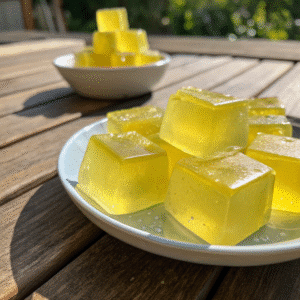The Himalayan salt diet has become a hot topic in wellness circles, especially among people following keto, carnivore, or other low-carb lifestyles. Unlike regular table salt, Himalayan pink salt is rich in trace minerals and believed to offer unique health benefits, from better hydration to improved digestion. But does it really live up to the hype, or is it just another health trend? In this article, we’ll break down the facts about the Himalayan salt diet, exploring its nutritional profile, potential health perks, risks, and how to use it properly. Whether you’re curious about adding it to your carnivore diet or wondering if it fits a low-sodium plan, this guide covers everything you need to know.
Don’t miss our Pink Salt Weight Loss Recipe for more drink inspiration that pairs perfectly with pink salt weight loss recipe detox!
Table of Contents
ToggleUnderstanding the Himalayan Salt Diet
What is the Himalayan Salt Diet?
The Himalayan salt diet is an eating approach that emphasizes replacing regular table salt with Himalayan pink salt in daily meals. Supporters claim that this natural salt, mined from ancient sea deposits in the Himalayan mountains, contains over 80 trace minerals that can boost overall wellness. Unlike refined table salt, which often includes additives like anti-caking agents, Himalayan pink salt is considered more natural and mineral-rich. At its core, the diet isn’t about eating massive amounts of salt but about choosing a potentially healthier form of sodium.
Difference Between Himalayan Pink Salt and Regular Table Salt
Himalayan salt diet and table salt may look similar, but their composition is different. Table salt is highly processed and stripped of most minerals, leaving nearly pure sodium chloride. It’s often fortified with iodine to help prevent deficiencies. Himalayan salt, on the other hand, contains calcium, potassium, magnesium, and iron, which give it the distinctive pink hue. While these minerals exist in small amounts, they add to the perception of Himalayan salt as a “better” option. Still, it’s important to remember that both salts are primarily sodium chloride, so moderation is key.
Origins and Popularity of the Himalayan Salt Diet
Mined from the Khewra Salt Mine in Pakistan, Himalayan pink salt has been used for centuries, not only as a seasoning but also in natural remedies. Its recent rise in popularity comes from the wellness movement’s focus on natural, unprocessed foods. Social media influencers, nutritionists, and wellness coaches often recommend it as part of diets like keto and carnivore, claiming benefits ranging from better hydration to improved energy levels. This growing interest has led to a surge of pink salt products on the market, including cooking salts, bath soaks, and even salt lamps.
Don’t miss our guide on Pink Salt Diet Recipe—a relaxing, detox-friendly addition to your weight loss routine.
Print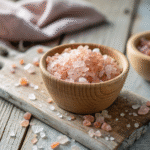
Himalayan Salt Diet: Benefits, Risks, and How to Use It Effectively
5 Stars 4 Stars 3 Stars 2 Stars 1 Star
No reviews
- Author: Jessica Lupone!
- Total Time: 5 minutes
- Yield: 1 serving 1x
Description
A refreshing detox drink made with Himalayan pink salt, lemon, and water to support hydration and electrolyte balance—perfect for keto, carnivore, or intermittent fasting plans.
Ingredients
2 cups filtered water
1/8 tsp Himalayan pink salt
1 tbsp freshly squeezed lemon juice
1 tsp apple cider vinegar (optional)
1/2 tsp raw honey or stevia (optional)
Ice cubes (optional)
Instructions
1. Fill a glass or jar with 2 cups of filtered water.
2. Add the Himalayan pink salt and stir until dissolved.
3. Squeeze in fresh lemon juice and mix well.
4. If using, add apple cider vinegar and sweetener to taste.
5. Stir everything thoroughly and add ice if desired.
6. Drink first thing in the morning or before meals for best results.
Notes
This drink supports hydration and can help replenish electrolytes—especially useful for those on low-carb or fasting diets.
Avoid drinking it excessively; 1–2 servings per day is ideal.
Use a straw to protect tooth enamel if regularly adding lemon or vinegar.
You can scale up the recipe and store it in the fridge for convenience.
- Prep Time: 5 minutes
- Cook Time: 0 minutes
- Category: Beverages
- Method: No-Cook
- Cuisine: Wellness
Nutrition
- Serving Size: 1 glass
- Calories: 5
- Sugar: 0
- Sodium: 290
- Fat: 0
- Saturated Fat: 0
- Unsaturated Fat: 0
- Trans Fat: 0
- Carbohydrates: 1
- Fiber: 0
- Protein: 0
- Cholesterol: 0
Nutritional Profile of Himalayan Salt Diet
Key Minerals Found in Himalayan Salt Diet
Himalayan pink salt is often praised for its mineral content, which includes more than 80 trace elements. Some of the most notable ones are:
- Calcium – supports bone and muscle function
- Potassium – helps regulate fluid balance and blood pressure
- Magnesium – plays a role in energy production and nerve health
- Iron – contributes to blood oxygen transport and gives the salt its pink color
Although the amounts of these minerals are small compared to daily requirements, they provide a natural alternative to the stripped-down composition of regular table salt. Many people consider these trace minerals as an added “bonus” when choosing Himalayan salt.
How Himalayan Salt Diet Compares to Sea Salt and Table Salt
When stacked up against other salts, Himalayan pink salt is slightly different but not radically so. Regular table salt is about 97–99% sodium chloride, with added iodine and anti-clumping agents. Sea salt, depending on its source, may contain small traces of minerals but often faces contamination concerns due to polluted waters. Himalayan salt, mined from ancient deposits, is less likely to contain modern pollutants. That’s one reason it’s marketed as a cleaner, more natural option. Still, in terms of sodium content, all salts are similar, which means Himalayan salt isn’t a free pass to eat unlimited sodium.
| Type of Salt | Sodium Content per Teaspoon | Added Minerals | Processing Level |
|---|---|---|---|
| Table Salt | ~2,300 mg | Iodine | Highly processed |
| Sea Salt | ~2,300 mg | Trace minerals | Lightly processed |
| Himalayan Pink Salt | ~2,300 mg | 80+ trace minerals | Minimal |
Role of Trace Minerals in Human Health
While the sodium in Himalayan salt works just like any other salt in controlling hydration and nerve signaling, its trace minerals may contribute subtle health benefits. For instance, magnesium aids in reducing muscle cramps, while potassium supports cardiovascular health. However, experts agree that the amounts in Himalayan salt alone are not significant enough to replace other dietary sources of minerals. The key takeaway is that pink salt can complement a nutrient-rich diet but shouldn’t be seen as a primary mineral source.
Want more? Discover great ideas like our Burnjaro Pink Salt Trick specially formulated for hydration and male wellness.

Health Benefits of the Himalayan Salt Diet
Electrolyte Balance and Hydration Support
One of the most common reasons people add Himalayan salt to their diet is for better hydration. Sodium, potassium, calcium, and magnesium act as electrolytes that help regulate fluid balance in the body. Athletes, people following low-carb diets like keto, and those on the carnivore diet often struggle with electrolyte imbalances, which can lead to fatigue, dizziness, or “keto flu.” Adding a pinch of Himalayan salt to water or food may help restore these electrolytes, supporting energy levels and hydration.
Potential Benefits for Carnivore and Keto Diets
The Himalayan salt diet is particularly appealing for people on carnivore and keto lifestyles. Low-carb diets cause the body to flush out more sodium, which can result in dehydration and low energy. Pink salt, with its extra minerals, may ease this issue by replenishing sodium and other trace nutrients. Some followers report fewer muscle cramps, steadier energy, and better digestion when they switch from table salt to Himalayan salt.
Detoxification and pH Balance
Advocates claim that Himalayan salt helps with detoxification and balancing the body’s pH levels. While the scientific evidence is limited, some wellness experts argue that the trace minerals in pink salt may help reduce acidity in the body and promote better internal balance. Pink salt baths are also popular for detoxifying the skin, though dietary benefits are the main focus of the Himalayan salt diet.
Impact on Digestion and Metabolism
Salt plays a vital role in digestion, especially in producing stomach acid (hydrochloric acid). Adequate stomach acid helps break down protein and absorb nutrients efficiently. Himalayan salt may support this process while also aiding bile production, which is essential for fat digestion. For people following high-fat diets like keto or carnivore, this can be a big advantage. Some users also report improved metabolism and fewer issues with bloating when they include pink salt in moderation.
Discover great ideas like Drying Pink Salt Trick Recipe to support weight loss and reduce bloating.

Risks and Misconceptions About the Himalayan Salt Diet
Common Myths Surrounding Pink Himalayan Salt
There’s a lot of hype around the Himalayan salt diet, but not all claims are backed by science. Some say it cures respiratory issues, prevents aging, or detoxifies heavy metals from the body. While Himalayan salt contains trace minerals, the amounts are too small to provide these sweeping benefits. It’s important to separate marketing claims from reality—pink salt is healthier in some ways, but it’s still salt, and moderation is necessary.
Health Risks of Excessive Salt Consumption
Regardless of the source, too much salt can be harmful. High sodium intake has been linked to elevated blood pressure, heart disease, and kidney problems. The American Heart Association recommends limiting sodium to about 2,300 mg per day, which equals roughly one teaspoon of salt. Eating large amounts of Himalayan salt, thinking it’s healthier, can still contribute to the same risks as regular table salt. The key is balance—use pink salt as a flavorful addition, not as a health supplement.
Can Himalayan Salt Really Reduce Sodium Intake?
One of the biggest misconceptions is that Himalayan pink salt is “low sodium.” In truth, its sodium content is almost identical to table salt. The difference lies in its trace minerals, but they don’t significantly reduce overall sodium levels. If someone is on a low-sodium diet due to health conditions like hypertension, switching to Himalayan salt won’t automatically make it safer. The only way to lower sodium intake is by using less salt altogether.
How to Use Himalayan Salt in Your Daily Diet
Recommended Daily Intake and Guidelines
Even though Himalayan salt contains minerals that regular table salt lacks, it still needs to be consumed in moderation. Health experts recommend keeping sodium intake under 2,300 mg per day, which equals about one teaspoon of salt. For people with high blood pressure or other cardiovascular concerns, the suggested amount drops closer to 1,500 mg per day. When adding Himalayan pink salt to your diet, the same rules apply—balance is key. It should be seen as a flavorful upgrade, not an excuse to consume more sodium.
Best Ways to Add Himalayan Salt to Meals
Himalayan pink salt can be used in nearly every way you’d use table salt. Here are some popular approaches:
- Cooking & Seasoning: Sprinkle it over roasted meats, vegetables, or eggs.
- Finishing Salt: Use coarse crystals to add a crunchy texture and mineral-rich flavor.
- Soups & Stews: Dissolves easily and enhances broth flavor.
- Salad Dressings: Mix with olive oil and vinegar for a mineral-packed dressing.
This versatility makes it easy to incorporate into everyday recipes without drastically changing your cooking routine.
Cooking, Seasoning, and DIY Electrolyte Drinks
Beyond basic seasoning, Himalayan salt can play a bigger role in nutrition. Many athletes and low-carb dieters make homemade electrolyte drinks by combining water, lemon juice, and a pinch of pink salt. This helps replenish lost sodium and minerals during workouts or carb-restricted eating. Another creative method is cooking on Himalayan salt blocks, which infuse food with subtle flavor while evenly distributing heat. Whether used for grilling, baking, or cold serving platters, salt blocks are a unique way to bring pink salt into daily meals.

Himalayan Salt and Specialized Diets
Is Himalayan Salt Good for Carnivore Diets?
For those following a carnivore diet, electrolyte balance is crucial. Since this diet eliminates nearly all plant foods, sodium intake often drops sharply, leading to dehydration, headaches, or fatigue. Himalayan salt can help fill this gap. Its sodium and trace minerals support hydration, nerve function, and digestion, making it a practical addition for carnivores. Many people on this diet even start their day with a glass of water mixed with a pinch of Himalayan pink salt to avoid electrolyte crashes.
Can You Use Himalayan Salt on a Low Sodium Diet?
If your doctor has advised you to follow a low-sodium diet, Himalayan salt should be used with caution. Despite its mineral content, its sodium levels are nearly identical to table salt. Switching to Himalayan pink salt won’t drastically reduce your sodium intake. However, its stronger flavor profile may help some people use less of it overall. The best strategy for low-sodium diets is reducing salt consumption altogether, while flavoring food with herbs, spices, and citrus for taste.
Role of Himalayan Salt in Keto and Paleo Lifestyles
Keto and Paleo dieters often turn to Himalayan salt for its hydration and mineral benefits. On keto, the body flushes out sodium faster due to lower insulin levels, which can trigger the dreaded “keto flu.” Adding pink salt helps prevent dizziness, muscle cramps, and fatigue. Paleo enthusiasts value Himalayan salt for its minimally processed, natural qualities, which align with the diet’s philosophy of eating closer to nature. In both lifestyles, pink salt plays a supportive role by enhancing nutrient balance while fitting into the overall eating framework.
Conclusion of the Himalayan Salt Diet
The Himalayan salt diet has gained popularity for good reasons—it offers a natural, mineral-rich alternative to regular table salt, supports hydration, and works well with specialized diets like keto and carnivore. That said, it’s not a magic bullet. Pink salt won’t cure diseases or replace a nutrient-rich diet, and overconsumption can still pose health risks. The best approach is to use Himalayan salt diet as a flavorful addition in moderation. When paired with balanced eating habits, it can support overall wellness while making meals more enjoyable.
For more recipes Follow me in our Social media
Facebook: https://www.facebook.com/profile.php?id=61573913076847
Pinterest: https://www.pinterest.com/momandgrandmacooks/
Medium: https://medium.com/@momandgrandmacooks
FAQs About the Himalayan Salt Diet
What is the Himalayan salt diet?
The Himalayan salt diet is an eating approach that swaps regular table salt with Himalayan pink salt. It emphasizes natural minerals while promoting hydration and electrolyte balance, especially for low-carb and high-protein lifestyles.
What is the pink Himalayan salt diet?
The pink Himalayan salt diet is essentially the same as the Himalayan salt diet but specifically highlights the use of pink-colored salt from Pakistan’s Khewra mines. It’s often linked to wellness benefits like improved hydration and digestion.
Is Himalayan salt good for carnivore diet?
Yes. Carnivore dieters often need extra sodium and electrolytes since their food choices can be restrictive. Himalayan salt helps replenish minerals and prevent dehydration-related symptoms.
Does the Himalayan salt diet work?
The diet can work in terms of supporting hydration, electrolyte balance, and digestion. However, claims about major detoxification or disease prevention are not scientifically proven. Its main benefit is providing a natural alternative to processed table salt.
Can you use Himalayan salt on a low sodium diet?
You can, but it won’t drastically reduce sodium intake. Himalayan salt still has nearly the same sodium content as table salt. For low sodium diets, portion control is key, regardless of the salt type.

